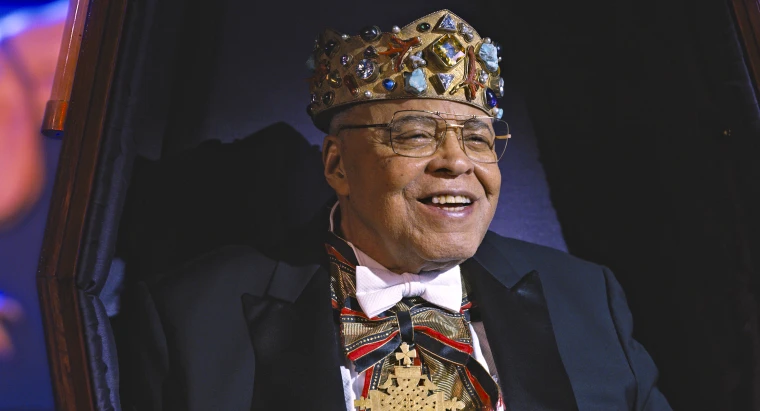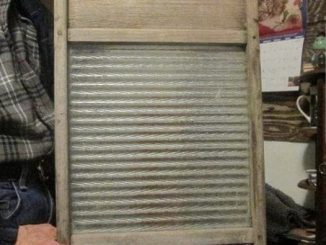
James Earl Jones, the beloved stage and screen actor who lent his iconic, deep voice to Darth Vader in Star Wars and Mufasa in The Lion King, has died at 93.
Regarded as one of the best actors of his generation, Jones’ career spanned Shakespeare to Hollywood hits. He is one of the few actors to have won an Emmy, Grammy, Oscar, Tony Award.
The actor’s death was reported by Deadline, via his representatives at Independent Artist Group.
James Earl Jones was born January 17, 1931 in Arkabutla, Mississippi and raised by his grandparents in Dublin, Michigan. While he would later become one of the most famous voices in the world, he says he suffered from a stutter in his youth.

“I was a stutterer. I couldn’t talk,” Jones recalled in a 1996 interview. “So my first year of school was my first mute year, and then those mute years continued until I got to high school.” A teacher encouraged him to overcome his stutter by reading poetry aloud.
Jones served in the US Army during the Korean War, and after decided to pursue a career in acting. He studied at the American Theatre Wing, working as a janitor to support himself. By the 1960s, Jones was establishing himself as one of his generation’s great Shakespearean actors, playing roles like Othello and King Lear. He also made his film debut in Stanley Kubrick’s classic 1964 comedy Dr. Strangelove, as bombadier Lt. Lothar Zogg.

In 1967, he played a boxer in The Great White Hope, winning the Tony Award for Best Actor in a Play. He reprised the role in the 1970 film version, receiving his first Academy Award nomination.
Amidst all his acclaimed acting work, Jones soon landed his most well-known and iconic role — one where he didn’t even have to appear on set: voicing the villainous Darth Vader in Star Wars. While Vader was played in costume by David Prowse, Jones dubbed over the lines with his own deep bass voice, helping to create one of the most famous characters in movie history.
While Jones originally opted to go uncredited for the role, it has become perhaps his most famous performance. He continued to voice Vader for decades, in the two sequels The Empire Strikes Back and Return of the Jedi, the prequel Revenge of the Sith and the spin-off Rogue One. In 2022, Jones retired from the role, but signed an agreement for his voice to be used in future projects using artificial intelligence and archive recordings.

Jones also provided the voice of another beloved movie character, Mufasa in the 1994 Disney film The Lion King. Jones later reprised the role in the 2019 remake.
Throughout the ’80s and ’90s, Jones appeared in many Hollywood films, including Conan the Barbarian, Coming to America, Field of Dreams, and The Hunt for Red October, Patriot Games and The Sandlot. He also won his second Tony Award, starring in the original production of August Wilson’s Fences.
He received eight Emmy Award nominations for his television work, winning twice in 1991: Outstanding Supporting Actor in a Limited Series or Movie for Heat Wave and Outstanding Lead Actor in a Drama Series for Gabriel’s Fire.

Jones also continued to perform on Broadway: over the past 20 years he starred in revivals of On Golden Pond, Cat on a Hot Tin Roof, Driving Miss Daisy, The Best Man and You Can’t Take it With You.
Jones was the recipient of many awards and honors throughout his acclaimed career. He received an Honorary Academy Award in 2011, making him one of the only people to have won an Emmy, Grammy, Oscar and Tony Award, known as “EGOT.” Broadway’s Cort Theatre was renamed the James Earl Jones Theatre in his honor in 2022.
Rest in peace to the iconic James Earl Jones, one of the greatest actors of our time — please share this
Mom issues warning after 10-year-old son collapses after playing in the ocean

A day at the beach is the best way to escape the oppressively high heat, but despite the fact that it might offer some respite, one mother from Massachusetts discovered that the shoreline also has a special set of risks.
She now wants to alert people to this.
Despite the fact that the incident occurred over a week ago, Heather Cassini reported that she is still “shaking.”
Declan, Cassini’s 10-year-old son, suddenly reported he didn’t feel well on July 4 as the 40-year-old mother and her were in Hampton Beach in New Hampshire.
Cassini wasn’t worried at first. Declan had been playing in the ocean, and it was hot.
In a now-viral Facebook post, Cassini wrote, “I thought the breakfast was just too much for the waves and he just needed to lay down.” Declan became “disoriented” and fell into a sunbather as soon as they started to head back so he could lay down.
He managed to get back up on his feet, but he fell to the ground once more.
Cassini told Today.com, “I’m trying desperately to pick him up because I’m pregnant.” He is throwing up and experiencing bouts of unconsciousness. He was really pale.

When a group of women sat close noticed the disturbance, they moved quickly to intervene. While monitoring his vitals, paramedics attempted to keep him warm and alert.
“May God bless everyone in our vicinity. She remarked, “There were so many nurses.”
“He was up and talking after what seemed like a lifetime. Cassini writes, “We got him to the car and waited for him to feel better.
Declan was found to have hypothermia due to the 52 degree ocean temperature.
Cassini remarked, “I had no idea that this could happen.” “I never thought about cold shock; you think about sunburns and dehydration and all the things that can happen in the water.”
Declan’s miraculous recovery has led Cassini to want to alert others to the risk of hypothermia in the summer.
“Just a heads up to parents who have children who adore the water and don’t feel chilly. It doesn’t necessarily follow that they can handle it just because they can.”
It never occurred to me that hypothermia could occur on a sweltering summer day! Not just for those who are parents, but for everyone, this is such a vital message.



Leave a Reply